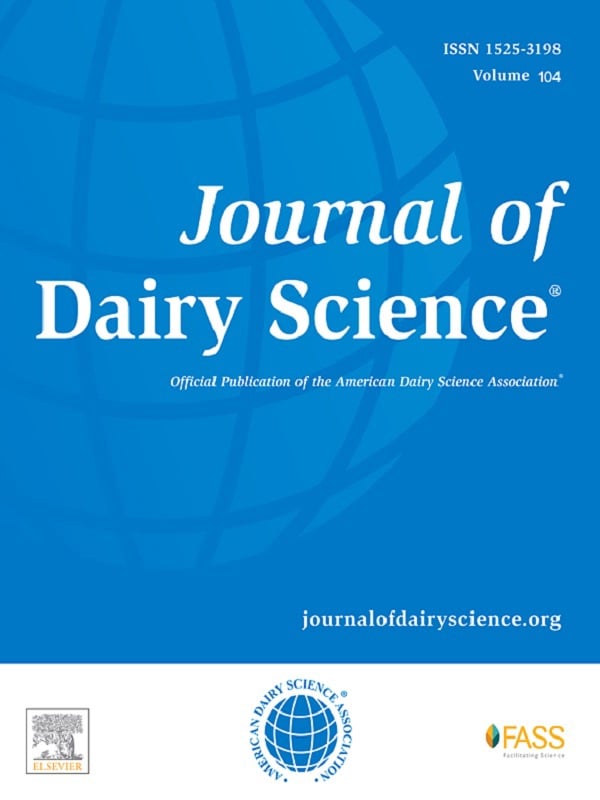- Ruminants
- 2021
- Dairy
- Open Access
A. Cánovas T.C.S. Chud C.F. Baes F.S. Schenkel F. Miglior

ABSTRACT
Genetic selection for improved feed efficiency in dairy cattle has received renewed attention over the last decade to address the needs of a growing global population. As milk yield is a critical component of feed efficiency metrics in dairy animals, our objective was to evaluate the associations between feed efficiency in primiparous Holstein cattle and parameters of a mathematical model describing individual lactation curves. The Dijkstra lactation curve model was fit to individual lactation records from 34 Holstein heifers with previously estimated measures of feed efficiency. We found that the optimal fit of the Dijkstra model was achieved using daily milk yield records up to 21 d in milk to capture the rise to peak milk yield and using monthly dairy herd improvement records for the remainder of lactation to accurately characterize lactation persistency. In the period of lactation before peak milk yield, improved feed efficiency was associated with a faster increase in daily milk yield over a shorter period of time at the expense of increased mobilization of body reserves; this serves to reinforce the concept that dairy cattle are primarily capital breeders versus income breeders. Feed efficiency in the period following peak lactation, as measured by gross feed efficiency, return over feed costs, and net energy efficiency of lactation, was positively associated with higher peak milk yield. The findings in early lactation suggest that estimates of feed efficiency could be improved by evaluating feed efficiency relative to conception, rather than parturition and lactation, to better account for the energy stored and released from body reserves in capital breeding.